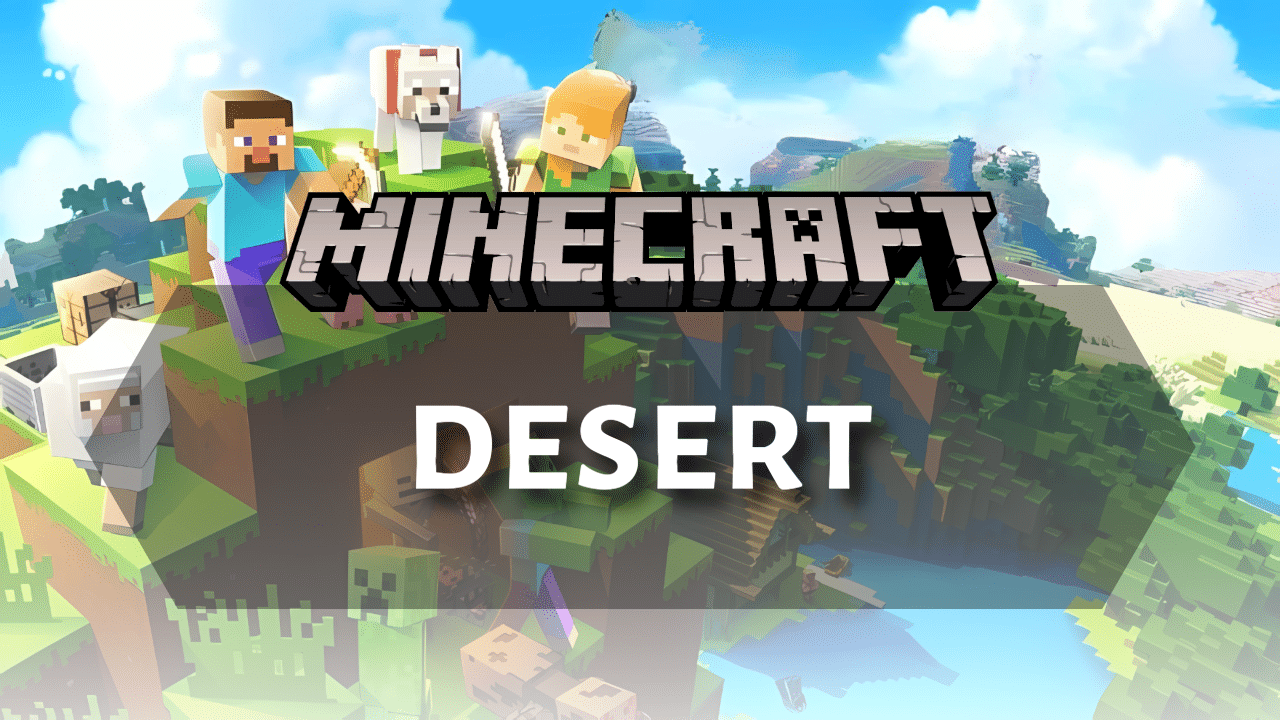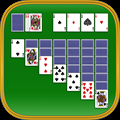
Introduction
The desert is an arid biome found in the Overworld of Minecraft Bedrock Edition. It is characterized by its dry climate, vast expanses of sand, and unique flora and fauna. Deserts can be challenging environments to survive in but also hold valuable resources and interesting structures to explore. This Minecraft Bedrock Desert Guide will provide a comprehensive overview of the desert biome in Minecraft Bedrock.
Characteristics of the Desert Biome
The desert biome in Minecraft Bedrock is predominantly made up of sand, with sandstone generating beneath the surface. The vegetation in the desert is sparse, consisting mainly of cacti and dead bushes, which are adapted to the harsh, dry environment. Occasionally, sugar canes may be found growing along the sides of rivers that run through the desert, providing a limited source of resources. A distinctive feature of the desert biome is the absence of trees, a result of the lack of water and harsh growing conditions.
Desert
Desert Lakes
Desert Hills
Previous NextThe weather in the desert biome is consistently dry, with no rainfall or any form of precipitation. The temperature is warm, making it an inhospitable environment for most plants and animals. The terrain in deserts is often relatively flat, with occasional hills or small mountains breaking up the landscape. Lava ponds can also generate in deserts, offering both a hazard and a valuable resource for crafting obsidian. Water sources like rivers, wells, and aquifers may appear, but they are often scarce, with water being more common at lower altitudes or near desert rivers and aquifers.
In addition to its dry climate, the desert biome is known for its unique mobs and generated structures, such as Desert Temples and Desert Villages, which can provide players with resources and shelter. Despite its harsh environment, deserts are a place of discovery and opportunity, especially for players who are prepared to explore and adapt to the challenging surroundings. The flat terrain and open spaces can be advantageous for building large structures or finding valuable resources through exploration.
Mobs in the Desert Biome
Rabbit
Only rabbits spawn naturally in the wild within the desert biome. Gold-colored rabbits are a unique desert variant, though regular brown rabbits may also appear. They are passive mobs that flee when approached.
Husk
Most zombies in the desert biome are replaced by husks, a variant that does not burn in sunlight and inflicts the hunger effect on players they attack. This makes them a persistent threat, even during the day.
Creeper
These hostile mobs spawn at night and are known for their silent approach and explosive attacks.
Skeleton
Skeletons, common at night, attack with bows and arrows. The open terrain of the desert makes them easier to spot but also leaves players more exposed to their ranged attacks.
Spider
Spiders spawn at night and can climb walls. Their smaller hitbox compared to zombies and skeletons can make them harder to hit.
Enderman
Endermen spawn in the desert and remain neutral unless directly looked at. The flat terrain allows them to teleport freely, making them challenging to combat.
Witch
Witches, hostile mobs that use potions for both offense and healing, can spawn in the desert at night.
Zombie Villager
The undead version of villagers, Zombie Villagers can spawn at night and may be cured back into regular villagers.
Bat
Bats, passive ambient mobs, spawn in underground areas of the desert.
Slime
Slimes can spawn in the desert but only in designated slime chunks.
Glow Squid
These underwater ambient mobs, which emit light, can spawn in underground water sources within the desert.
Mobs Found in Desert Villages
Villager
Desert Villages naturally spawn villagers, who often have specific professions and can trade with players.
Cat
Cats roam freely in Desert Villages.
Camel
Camels, unique to Desert Villages, can be ridden by players and carry an additional passenger.
Cow
Cows may appear in Desert Villages, providing leather and raw beef.
Pig
Pigs, a source of raw porkchops, may spawn in Desert Villages.
Iron Golem
These large mobs can spawn in Desert Villages to protect villagers from hostile threats.
Other Mobs
Squid
Squids can be found swimming in rivers that occasionally generate within the desert biome.
The occurrence and number of these mobs vary based on factors such as the time of day, biome subtypes, and the presence of structures like villages.
Generated Structures in the Desert Biome
Deserts are known for having a relatively high number of generated structures, each offering unique opportunities for survival, exploration, and resource gathering. These include Desert Temples (also known as Desert Pyramids), Desert Villages, Desert Wells, Fossils, and Pillager Outposts. While some of these structures contain valuable loot and hidden secrets, others provide shelter and access to important materials.
Desert Temples
Desert Temples are pyramid-like structures made of sandstone, smooth sandstone, and terracotta, often partially buried under sand. They feature a hidden underground chamber containing four loot chests, which can include rare items like diamonds, emeralds, enchanted books, and golden apples. However, a deadly TNT trap is located beneath the central floor panel, requiring careful excavation to avoid destruction.
Desert Villages
Desert Villages
Previous NextDesert Villages are settlements composed of sandstone-based houses, farms, and trading stations populated by villagers with various professions. These villages provide players with a renewable source of food, crafting materials, and trading opportunities, with some villagers offering enchanted gear or rare resources. Occasionally, an Iron Golem spawns to protect villagers from hostile mobs, making it a relatively safe area for players seeking refuge.
Desert Wells
Desert Wells are small, sandstone-built water sources that generate randomly throughout the desert biome. While initially considered to have little value, the addition of archaeology mechanics in recent updates has made them more significant. Players can now find and brush away suspicious sand at the bottom of these wells to uncover hidden pottery shards and other valuable artifacts.
Fossils
Fossils are large skeletal structures composed of bone blocks, typically generating underground beneath desert terrain. These fossils resemble the remains of ancient creatures and serve as a unique source of bone meal, which is useful for farming. Their location underground often makes them difficult to spot, requiring players to dig carefully to uncover them.
Pillager Outposts
Pillager Outposts sometimes generate in the desert, appearing as tall wooden watchtowers surrounded by smaller structures and cages. These outposts are home to hostile pillagers, who patrol the area with crossbows and attack any intruders on sight. While dangerous, these outposts contain loot chests with valuable items and serve as a potential site for triggering a raid by acquiring the Bad Omen effect.
Each of these structures contributes to the desert biome’s distinct challenges and rewards, offering players numerous opportunities for discovery, survival, and combat. Exploring them wisely can provide essential resources and rare treasures, but some require caution due to hidden dangers and hostile mobs.
Archaeology in Desert Structures
Archaeology in Minecraft allows players to discover hidden treasures by carefully excavating certain blocks found in specific structures. This feature focuses on suspicious sand, which appears in Desert Temples (Desert Pyramids) and Desert Wells, and suspicious gravel, which is found in Trail Ruins.
To excavate, players must craft and use a brush, made from one copper ingot, one feather, and one stick. The brush allows players to gently remove layers from suspicious blocks, revealing valuable or historical items. However, players must be cautious, as suspicious sand is affected by gravity, meaning if it falls, any item inside will be lost.
In the desert biome, archaeological sites are primarily located in Desert Temples and Desert Wells. Desert Temples contain hidden chambers where suspicious sand can be found mixed in with regular sand, often near the treasure room. Desert Wells, small sandstone structures with a central water source, also contain suspicious sand directly beneath the water, requiring players to remove the water before excavating. Suspicious sand is visually distinct, with a slightly cracked and rough texture, making it identifiable among regular sand blocks. Using a shovel on suspicious sand will destroy it and any potential loot inside, so only a brush should be used for excavation.
Excavating suspicious sand in the desert can yield various valuable items. Pottery shards are the most unique find, with different designs that can be combined to craft decorated pots. Other possible discoveries include emeralds, diamonds, gunpowder, TNT, sticks, bricks, and suspicious stew. While Desert Temples often contain Archer, Miner, Prize, and Skull pottery shards, Desert Wells typically contain Arms Up and Brewer pottery shards. Pottery shards can be crafted into decorative pots, which serve as historical artifacts within the game. Through archaeology, players can uncover rare items while piecing together fragments of Minecraft’s ancient past.
Desert Seeds for Bedrock Edition
If you’re looking for great desert biome seeds in Minecraft Bedrock Edition, here are a couple of top picks that provide unique and exciting starting locations.
Seeds
1738801
This seed places you right in a Desert Village with an Iron Golem and camels, making it an excellent starting point for trading and survival. A large cavern nearby offers early-game exploration, while heading east will take you to an Eroded Badlands biome, adding variety to the landscape.
13579
Perfect for a desert survival challenge, this seed drops you onto a large Desert island surrounded by water. The island is dotted with cacti, dead bushes, and small lava pools, while gold-colored rabbits hop around the terrain. Nearby waters contain squids and sugar cane, making it a solid choice for players who enjoy isolated survival experiences.
These seeds offer diverse desert starts, whether you’re looking for villages, caves, or a true survival island experience. Some may also provide quick access to Desert Temples and archaeology sites, making them perfect for players interested in uncovering Minecraft’s buried secrets. Just be sure you’re using the correct seed for your game version to get the intended experience!
Survival in the Desert Biome
Surviving in a desert biome in Minecraft Bedrock Edition is challenging due to scarce wood, water, and food. Prioritize gathering sticks from dead bushes or looting nearby villages for wood. If near a river or oasis, set up camp for access to water and sugar cane. Use sandstone for building a secure shelter.
Food is limited—rabbits are common early on, and Desert Villages may offer gardens with crops like carrots, potatoes, and wheat. Villagers also provide trade opportunities for tools, food, and gear. Fishing and trading cactus dye can supplement resources.
Nights are dangerous, with high mob spawns and Husks that cause Hunger and don’t burn in sunlight. Explore structures like Desert Temples cautiously for valuable loot. With smart resource management and safe shelter, thriving in the desert is possible.
Desert Pyramids (Desert Temples)
Desert Temples in Minecraft Bedrock Edition are iconic structures found scattered throughout desert biomes. Built from sandstone and decorated with orange terracotta, they feature a distinct pyramid shape with two towers at the front, making them relatively easy to spot—even when partially buried by sand due to terrain generation.
To enter a Desert Temple, players can use the main doorway, one of the side entrances in the towers, or dig down from the top. Once inside, the central chamber displays a colorful terracotta pattern on the floor, which conceals a vertical shaft leading to the treasure room. However, players must be cautious—at the bottom of the shaft lies a pressure plate connected to nine blocks of TNT. Stepping on it will trigger a deadly explosion that destroys both the player and the valuable loot. To safely reach the treasure, it’s best to dig down carefully along the side of the shaft and disarm the pressure plate before doing anything else.
The treasure room contains four loot chests that can offer valuable early-game rewards, such as diamonds, emeralds, gold ingots, saddles, horse armor, and enchanted books.
Desert Temples are among the best structures to find in the early game, offering high-value rewards for those who approach with caution and strategy. With proper tools, careful excavation, and awareness of the trap system, players can turn a Desert Temple into both a treasure trove and a potential temporary shelter in the harsh desert environment.
Conclusion
The desert biome in Minecraft Bedrock offers a unique and challenging experience. While resources may be scarce, the presence of various structures, especially Desert Temples and Desert Wells with their archaeological secrets, provides ample opportunities for exploration and discovery.
By understanding the characteristics of the desert and utilizing available seeds, players can embark on exciting adventures in this arid landscape. Remember to exercise caution around Desert Temples and take advantage of the new archaeology mechanics to uncover the treasures hidden beneath the sands.
If you’re looking for more guides, be sure to explore the website for more tips and tricks. Enjoy your adventure, and happy mining!
Frequently Asked Questions(FAQs)
🍄What’s special about husks?
They’re desert zombies that cause hunger and don’t burn in the sun.
🍄Can I grow crops in the desert?
Yes—with water and light. Farming works fine with the right setup.
🍄Can I find water or trees in deserts?
Rarely. Look for oases or villages with farms. Most deserts lack natural trees.













